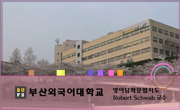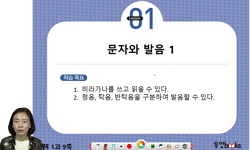This study examines the “toka” particle at the end of speech, specifically in examples derived from everyday conversation. A total of 300 examples were analyzed and categorized into four groups:example usage, citation usage, blur usage, and emphas...
http://chineseinput.net/에서 pinyin(병음)방식으로 중국어를 변환할 수 있습니다.
변환된 중국어를 복사하여 사용하시면 됩니다.
- 中文 을 입력하시려면 zhongwen을 입력하시고 space를누르시면됩니다.
- 北京 을 입력하시려면 beijing을 입력하시고 space를 누르시면 됩니다.

談話レベルからみた「とか」用法 -発話末に位置する「とか」を中心に- = Exploring Discourse-Level Usage of the 'toka' Particle in Everyday Conversation
한글로보기https://www.riss.kr/link?id=A108610519
-
저자
염미란 (전남대학교)
- 발행기관
- 학술지명
- 권호사항
-
발행연도
2023
-
작성언어
Japanese
-
주제어
일상회화 ; 발화말 ; 담화레벨 ; とか ; Daily Conversation ; Utterance-final segments ; Discourse Level ; toka
-
등재정보
KCI등재
-
자료형태
학술저널
- 발행기관 URL
-
수록면
305-325(21쪽)
- DOI식별코드
- 제공처
-
0
상세조회 -
0
다운로드
부가정보
다국어 초록 (Multilingual Abstract)
This study examines the “toka” particle at the end of speech, specifically in examples derived from everyday conversation. A total of 300 examples were analyzed and categorized into four groups:example usage, citation usage, blur usage, and emphasis usage. Based on this, we examined the discourse-level and semantic characteristics of the “toka” particle in end-of-speech positions. Furthermore, a notable characteristic of its use is the continuous appearance of discourse markers such as “nanka” that guides the conversation in an ambiguous manner. The semantic features of the “toka” particle include the ability to (ⅰ)express the speaker’s thoughts indirectly using the form of quotation, (ii) the ability to express the speaker’s opinion with rising intonation, (iii)and its classification as belonging to “other cognitive modalities” rather than being strictly evidence-based.
참고문헌 (Reference)
1 이은미, "일본어교육관점에서 본 「とか」의 사용양상 -담화상의 기능을 중심으로" 한국일본언어문화학회 (21) : 91-107, 2012
2 加藤陽子, "話し言葉における引用表現-引用標識に注目して-" くろしお出版 19-, 2010
3 丸山直子, "話しことばの助詞-「とか」「なんか」「なんて」-(鳥居フミ子教授記念号)" 東京女子大学 85 : 122-136, 1996
4 辻大介, "若者語と対人関係-大学生調査の結果から-" 東京大学社会情報研究所 (57) : 17-42, 1999
5 洞澤伸, "若者言葉「~とか」の強調用法について" 岐阜大学地域科学部 37 : 1-17, 2015
6 天野みどり, "若者ことば-銅メダルとかとった" 和光大学総合文化研究所年報 2001 : 100-107, 2001
7 日本語記述文法研究会, "現代日本語文法4第8部" くろしお出版 178-, 2003
8 "日本語日常会話コーパス"
9 염미란, "日本語の文末における「ぼかし表現」の考察" 한국일본어문학회 1 (1): 77-98, 2022
10 砂川千穂, "日本語における「とか」の文法化について-並立助詞から引用マーカーへ-" 日本女子大学 06 : 61-73, 1999
1 이은미, "일본어교육관점에서 본 「とか」의 사용양상 -담화상의 기능을 중심으로" 한국일본언어문화학회 (21) : 91-107, 2012
2 加藤陽子, "話し言葉における引用表現-引用標識に注目して-" くろしお出版 19-, 2010
3 丸山直子, "話しことばの助詞-「とか」「なんか」「なんて」-(鳥居フミ子教授記念号)" 東京女子大学 85 : 122-136, 1996
4 辻大介, "若者語と対人関係-大学生調査の結果から-" 東京大学社会情報研究所 (57) : 17-42, 1999
5 洞澤伸, "若者言葉「~とか」の強調用法について" 岐阜大学地域科学部 37 : 1-17, 2015
6 天野みどり, "若者ことば-銅メダルとかとった" 和光大学総合文化研究所年報 2001 : 100-107, 2001
7 日本語記述文法研究会, "現代日本語文法4第8部" くろしお出版 178-, 2003
8 "日本語日常会話コーパス"
9 염미란, "日本語の文末における「ぼかし表現」の考察" 한국일본어문학회 1 (1): 77-98, 2022
10 砂川千穂, "日本語における「とか」の文法化について-並立助詞から引用マーカーへ-" 日本女子大学 06 : 61-73, 1999
11 グループ·ジャマシイ, "教師と学習者のための日本語文型辞典" くろしお出版 320-321, 1998
12 이윤희, "対人コミュニケーションにおける対人緩衝機能への拡張 -「ていうか」「とか」「なんか」「みたい(な)」の類似機能を中心に-" 한국일본어학회 (34) : 153-168, 2012
13 鈴木佳奈, "会話における『なんか』の機能に関する一考察" 大阪大学言語文化学会 9 : 63-78, 2000
14 劉暁傑, "ぼかし表現「とか」についての考察" 相愛大学人文科学研究所 5 : 48-35, 2011
15 이묘희, "「とか」の機能の変化 :並立機能から副助詞・引用機能へ" 한국현대언어학회 35 (35): 415-428, 2019
16 大和啓子, "「とか」による例示について" 筑波大学人文社会科学研究科文芸·言語応用言語学領域 (17) : 17-27, 2010
동일학술지(권/호) 다른 논문
-
『I-JAS』における「-てみる」の使用実態 ―韓国語母語の日本語学習者を中心に―
- 한국일본문화학회
- 잇시키 마이코
- 2023
- KCI등재
-
「ご名詞になる」の日本語教育の実態と問題点 ー韓国人日本語学習者の誤用を中心にー
- 한국일본문화학회
- 上野由香子
- 2023
- KCI등재
-
재일간행물과 한인디아스포라의 해양서사 —『민주조선』·『조선평론』·『코리아평론』· 『삼천리』·『청구』·『호르몬문화』를 중심으로—
- 한국일본문화학회
- 김옥지
- 2023
- KCI등재
-
『테이킨오우라이(庭訓往来)』로 보는 숟가락 문화 ―주석과 삽화를 중심으로―
- 한국일본문화학회
- 도기홍
- 2023
- KCI등재




 DBpia
DBpia






